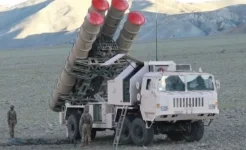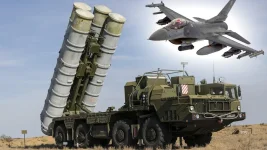- Views: 3K
- Replies: 5
The Indian Air Force (IAF) has officially confirmed that its newly inducted S-400 air defence system destroyed six Pakistani aircraft during a military engagement from May 7-10, 2025.
The announcement was made by Air Chief Marshal Amar Preet Singh, who stated the action was part of "Operation Sindoor," a retaliatory strike following the April 22 Pahalgam terror attack that killed 26 civilians.
While the IAF has confirmed six kills, renowned Austrian military aviation analyst Tom Cooper suggests that independent evidence points to even higher losses for Pakistan, both in the air and on the ground.
Speaking at the 16th Air Chief Marshal LM Katre Memorial Lecture, the IAF Chief provided details of the engagement, attributing the success to the formidable capabilities of the Russian-made S-400 Triumf system.
He confirmed that the system was responsible for downing five fighter jets and one high-value Airborne Early Warning and Control (AEW&C) aircraft.
The destruction of the AEW&C, a Saab 2000 Erieye, occurred at an unprecedented range of nearly 300 kilometres, which Air Chief Marshal Singh called "the largest ever recorded surface-to-air kill."
The S-400 system, known for its layered defence capabilities, was described as a "game-changer." Its advanced 40N6 missile, with a reach of up to 380 kilometres, created a powerful deterrent that kept Pakistani fighters at a safe distance.
"Its range kept their aircraft away from their long-range glide bombs, which they couldn’t use because they couldn’t penetrate our defences," Singh explained.
By neutralizing the AEW&C plane, which acts as a flying command post for coordinating fighter operations, the IAF effectively disrupted Pakistan's entire aerial battle management network.
The operation's scope extended beyond shooting down aircraft. The IAF also targeted and destroyed significant military infrastructure, including two command and control centres at Murid and Chaklala, six radar installations, and facilities at key airbases like Sargodha, Rahim Yar Khan, and Sukkur.
Wreckage from Pakistani drones and munitions recovered after the strikes is currently being studied by the IAF and the Defence Research and Development Organisation (DRDO) to analyse Pakistan's technological capabilities.
Commenting on the IAF's disclosure from Austria, analyst Tom Cooper said it was a "nice confirmation" of facts that had already been assessed through independent channels back in May.
"We have seen evidence of not only five, but even more Pakistani aircraft being shot down," Cooper stated, adding that there was also evidence of additional aircraft destroyed on the ground.
Cooper emphasised the global significance of the operation, calling it a "historic achievement" on a tactical, operational, and strategic level.
The successful 300-kilometre engagement sets a new global benchmark for integrated air defence systems and is being closely studied by militaries worldwide, including those in NATO and East Asia, for its implications on the future of network-centric air warfare.




